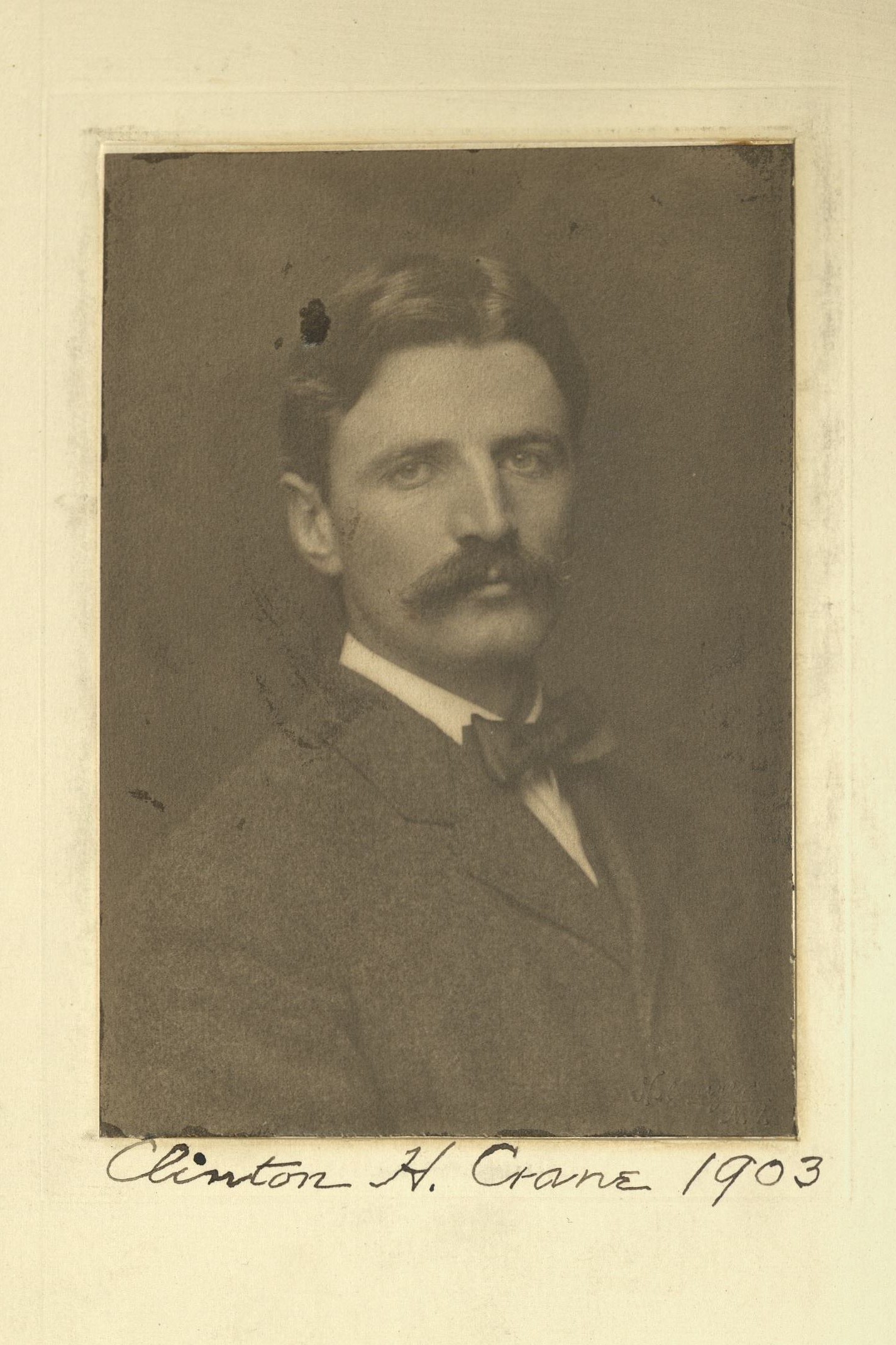Naval Architect
Centurion, 1903–1958
Born 30 January 1873 in Englewood, New Jersey
Died 1 December 1958 in Rockport, Maine
Buried Woodlawn Cemetery , Bronx, New York
, Bronx, New York
Proposed by Austen G. Fox and Richard H. Derby
Elected 5 December 1903 at age thirty
Seconder of:
Century Memorial
Although he was a member for fifty-five years, Clinton Crane was not often in the Century Clubhouse. But he was well-known by reputation to that sizable group of nautical enthusiasts who are so often heard telling their adventures of cruise and race at the round table. For he was an able yacht designer—professionally, at first, later as a hobby.
Born in 1873 in Englewood, New Jersey, Crane graduated from Harvard in 1894. He then spent three years studying engineering and naval architecture at the University of Glasgow. From 1900 to 1913, as a member of the firm of Tams, Lemoine, and Crane, he designed many large and celebrated yachts, including Vanadis, Aloha I, and Aloha II. His speed boat, Dixie I, brought the Harmsworth trophy to the United States, and her successor, Dixie II, defended it.
In 1913, he became interested in lead mining. As president of the St. Joseph Lead Company, he directed its growth until it became the country’s largest lead producer. Meanwhile the company had also gone in for zinc mining and erected a zinc smelter near Pittsburgh. During the First World War, Crane served under Bernard Baruch on the War Industries Board and later became president of the Lead Industries Association.
Notwithstanding these activities, he continued to design yachts. His was the six meter Lanai, which brought the Seewanhaka cup back from Norway. He designed several 8- and 12-meter sloops for himself. One of these was Gleam, the subject of one of Rosenfeld’s best known “Spinnaker” pictures. In 1929, he designed Weetamoe, a J-class contender for the honor of defending the America’s Cup.
In 1941, he suffered an automobile accident which injured him so badly that only a miracle of surgery could restore him to an active life. From his hospital bed he gave a graphic account of his condition. “Until I looked at my legs,” he wrote, “I did not know I was seriously hurt, but there was the right leg bent at right angles just above the knee, and the left leg bent at right angles above the ankle. I knew they were my legs because I recognized the pants.”
Clinton Crane’s book Yachting Memories published in 1952 has instructed and entertained many a lover of the sport.
Roger Burlingame
1959 Century Association Yearbook

